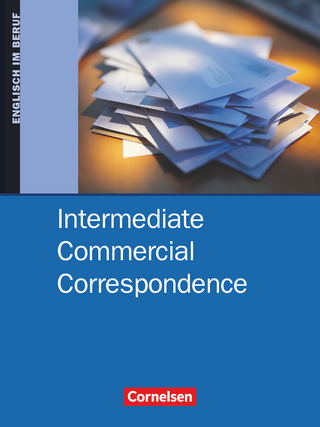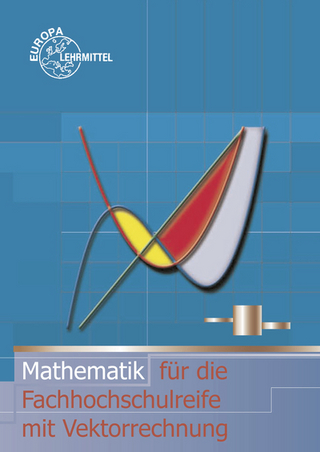Multi-Plant Safety and Security Management in the Chemical and Process Industries
Wiley-VCH (Verlag)
978-3-527-32551-1 (ISBN)
- Titel gebraucht verfügbar
- Artikel merken
Dieser praxisbezogene Band arbeitet Prinzipien, Voraussetzungen, Stärken, Grenzen und Anwendungsbereiche eines Sicherheits- und Arbeitsschutzmanagements für Anlagencluster in der chemischen Industrie heraus. Er stellt Ihnen Richtlinien, Prozeduren, Rahmenpläne und technologische Ansätze zur Schaffung einer Sicherheitskultur zur Verfügung und erleichtert Ihnen so die Planungsarbeit. Der Stoff ist weniger mathematisch als konzeptuell aufbereitet und lässt sich daher ohne Umwege in die Praxis übertragen.
Genserik Reniers received his PhD in Applied Economic Sciences from the University of Antwerp, after completing a Master`s degree in Chemical Engineering at the Vrije Universiteit Brussels. He lectures in general chemistry, organic chemistry, chemical process technology, industrial processes and thermodynamics at the University of Antwerp, Belgium. He is also visiting professor Risk Management at the Institute of Transport and Maritime Management in Antwerp. At the Hogeschool-Universiteit Brussel in Brussels, Professor Reniers lectures in prevention management, advanced occupational health and safety management and chemical processes/unit operations. His main research interests concern the collaboration and interaction between safety and security topics and socio-economic optimization within the chemical industry. He coordinates the Antwerp Research Group on Safety and Security (ARGoSS), unifying multi-disciplinary safety and security research at the University of Antwerp. He has extensive experience in leading research projects funded both by the Belgian government and the chemical industry. He is a Fellow of the International Congress of Disaster Management, Member of the Society for Risk Analysis and the Royal Flemish Society for Engineers and serves as an Associate Editor for the Journal of Loss Prevention in the Process Industries.
Preface
INTRODUCTION
CHEMICAL RISKS IN A MULTI-PLANT CONTEXT
Introduction
Safety Risks Versus Security Risks
The Safety-Risk Spectrum
The Security-Risk Spectrum
Multi-Plant Chemical Risks
Multi-Plant Chemical-Risk Management
Hypothetical Benefits Associated with Multi-Plant Chemical Risks
Safety-Risk Assessment and Safety-Risk Management
Summary and Conclusions
A MULTI-PLANT SAFETY AND SECURITY CULTURE: THE REQUIREMENTS
Introduction
Encouraging Companies to Install a Multi-Plant-Safety and -Security Culture
The Present state-of-The-Art Deal with Safety and Security Risks
Coping with the Future: Developing a Multi-Plant-Safety and -Security Culture
Summary and Conclusions
A MULTI-PLANT SAFETY AND SECURITY CULTURE - THE PROCEDURES: ESTABLISHING A MULTI-PLANT SAFETY AND SECURITY MANAGEMENT SYSTEM
Introduction
Managing Safety, Quality, Environment, and Security
Plant-, Joint- and Multi-Plant-Safety and -Security-Management Stakeholders
Practical Recommendations for Achieving Plant or Multi-Plant-Safety Loop of Continuous Improvement
Practical Recommendations for Achieving Plant or Multi-Plant-Security Loop of Continuous Improvement
System Implementation
Summary and Conclusions
A MULTI-PLANT SAFETY AND SECURITY CULTURE - THE PEOPLE: FACILITATING MULTI-PLANT SAFETY AND SECURITY COLLABORATION
Introduction
A Multi-Plant-Safety-Management Framework
A Multi-Plant-Security-Management Framework
Summary and Conclusions
A MULTI-PLANT SAFETY AND SECURITY CULTURE - THE TECHNOLOGY: DEVELOPING THE TOOLS TO ADVANCE MULTI-PLANT SAFETY AND SECURITY
Introduction
A Multi-Plant Domino-Risk Methodology and -Decision Support Tool
Summary and Conclusions
ASSESSING, EVALUATING AND CONTINUOUSLY OPTIMIZING OPERATIONAL STAFFING LEVELS WITHIN A MULTI-PLANT AREA
Introduction
Staffing-Level (SL)-Assessment Management Model
Instrument for Existing Staffing-Level Assessment (IESLA)
The MCSL Method
Roadmap of Staffing-Level Assessment
The Way Towards Continuous Staffing-Level Improvement in Industrial Areas
Summary and Conclusions
MULTI-PLANT SITE-INTEGRATED SAFETY AND SECURITY GOVERNANCE
Introduction
From Individual Plant Safety and Security Know-How to Multi-Plant Safety and Security Knowledge
Towards a Design Code of Good Practice for Integrating Multi-Plant-Safety and -Security Building Blocks
Planning for Safety and Security Sustainability
Summary and Conclusions
GAME-THEORY: A MATHEMATICAL TECHNIQUE TO CONVINCE COMPANY TOP MANAGEMENT TO INVEST IN MULTI-PLANT SAFETY AND SECURITY
Introduction
Qualitative Discussion on Multi-Plant-Safety and -Security Investments
Two-Plant External Domino-Effects Investment Model
Two-Plant Martyrdom Games
Multi-Plant Games
Summary and Conclusions
CONCLUSIONS AND RECOMMENDATIONS
Introduction
Summary
Main Conclusions and Recommendations
APPENDIX
Instrument for Evaluating Security Staffing Levels
The IESLA Instrument
Instrument for Evaluating Safety Critical Staffing Levels
"Instantly logical in conception and introduction, this book starts right, with its list of acronyms immediately to hand after the brief but informative preface , in which the author declares and explains his aims and sources within the text ". (The ROSPA Occupational Safety & Health Journal, 1 December 2010)
| Erscheint lt. Verlag | 19.4.2010 |
|---|---|
| Sprache | englisch |
| Maße | 170 x 240 mm |
| Gewicht | 680 g |
| Themenwelt | Naturwissenschaften ► Chemie ► Technische Chemie |
| Schlagworte | Anlagenplanung • Arbeitssicherheit u. Umweltschutz i. d. Chemie • Chemical and Environmental Health and Safety • chemical engineering • Chemie • Chemische Technik • Chemische Verfahrenstechnik • Chemische Verfahrenstechnik / Theorie, Planung u. Management • Chemistry • Industrial Chemistry • Industrielle Chemie • Technische Sicherheit • Technische u. Industrielle Chemie • Theory, Planning & Management • Theory, Planning & Management • Verfahrenstechnik |
| ISBN-10 | 3-527-32551-4 / 3527325514 |
| ISBN-13 | 978-3-527-32551-1 / 9783527325511 |
| Zustand | Neuware |
| Informationen gemäß Produktsicherheitsverordnung (GPSR) | |
| Haben Sie eine Frage zum Produkt? |
aus dem Bereich





